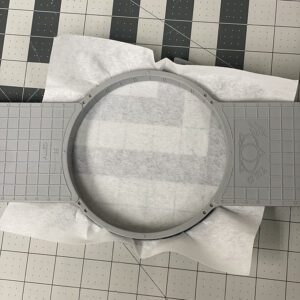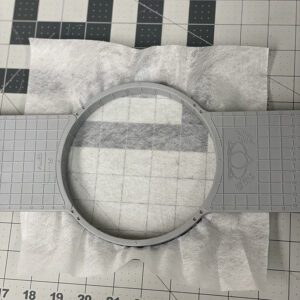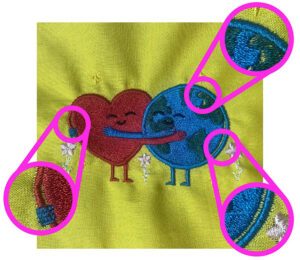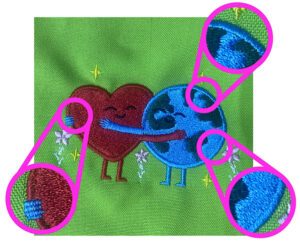All About Backing
Embroidery is a fantastic way to add personality and style to any garment or textile. However, embroidering a design is more complex than simply pressing a button on your embroidery machine. Multiple factors have the potential to impact the success of your sew-out. When sewing out a design, there are several factors to consider, such as fabric selection, hooping, the tension on your embroidery machine, and the type of backing you use. Yes, you read that right – the kind of backing you use plays a crucial role in the outcome of your embroidery project. Embroidery backing fabric is a material that is hooped with your fabric or garment. Its purpose is to stabilize and support the fabric during embroidery. Using the correct type of backing is crucial if you want to produce a high-quality sew-out. There are various types of backing available, each suited to different fabrics and designs.


Tear Away Backing Poly Mesh Backing
Let’s examine some examples of how your backing selection may affect your sew-out.
In these embroidery backing tips, we used the same digitized file for both sew-out samples but applied two different types of backing. We sewed a semi-complex embroidery design (about 6,000 stitches) on non-stretch cotton fabric, with backing selection being the only difference.  In the first example, we used poly mesh backing, our cut-away stabilizer made of strong, ultra-sheer, lightweight material. As mentioned, poly mesh backing is best suited for a design with a low stitch count. While using a higher stitch count design, we encountered registration issues in multiple parts of the sew-out and fabric puckering in numerous locations. These results suggest a thicker backing option is more appropriate for this project. On the other hand, in our second example, we used tearaway backing, which is thicker than the poly mesh backing we used in the first example. Tearaway backing is sturdy and commonly used to support and stabilize fabrics that tend to bunch up during embroidering. As a result, we avoided the registration issues and fabric puckering that we experienced in the first sew-out, providing an overall cleaner and more appealing sew-out.
In the first example, we used poly mesh backing, our cut-away stabilizer made of strong, ultra-sheer, lightweight material. As mentioned, poly mesh backing is best suited for a design with a low stitch count. While using a higher stitch count design, we encountered registration issues in multiple parts of the sew-out and fabric puckering in numerous locations. These results suggest a thicker backing option is more appropriate for this project. On the other hand, in our second example, we used tearaway backing, which is thicker than the poly mesh backing we used in the first example. Tearaway backing is sturdy and commonly used to support and stabilize fabrics that tend to bunch up during embroidering. As a result, we avoided the registration issues and fabric puckering that we experienced in the first sew-out, providing an overall cleaner and more appealing sew-out.  If you’re experiencing sew-out difficulties or have questions regarding backing selection, don’t hesitate to contact our trained embroiderers at PRO digitizing. Our digitizer team can always help you choose the perfect backing for your project. In summary, backing plays a crucial role in the quality of your sew-out. By choosing the correct type of backing and experimenting with different options, you can achieve beautiful and professional embroidery designs that stand the test of time.
If you’re experiencing sew-out difficulties or have questions regarding backing selection, don’t hesitate to contact our trained embroiderers at PRO digitizing. Our digitizer team can always help you choose the perfect backing for your project. In summary, backing plays a crucial role in the quality of your sew-out. By choosing the correct type of backing and experimenting with different options, you can achieve beautiful and professional embroidery designs that stand the test of time.
PRO TIP: Use black backing on dark garments to minimize backing appearance or bleeding. Visit our Instagram page @prodigitizing for more #prosewtips
